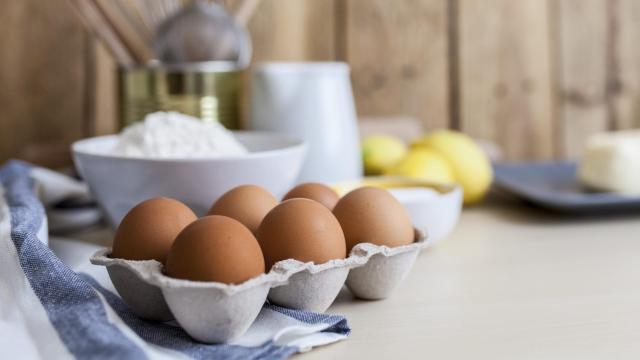The most successful bakers are the most methodical and least impulsive, or they have at least learned to channel their impulsiveness into other pursuits. Baking requires a small amount of forethought, a tiny bit of planning, and a crumb of patience. Baking requires certain ingredients to be at certain temperatures before they’re even mixed into a batter, and there’s no way around it.
When you see a recipe that calls for your eggs and butter to be room temperature (around 18-21ºC is ideal), you should take heed. Though I have a big “Don’t tell me what to do!” streak, this is one instance where you should listen to the (baking) authorities. But knowing why you should do something makes you more likely to actually do it, so let’s get into it.
You can’t cream cold butter
“Creaming” is the action of combining butter, sugar, and (sometimes) a leavening agent until the mixture becomes light and fluffy. According to the Queen of Practical Baking, Stella Parks, a temperature of 18ºC is best for achieving proper aeration, which is what gives the mixture its light and fluffy appearance and texture. Fridge-cold butter, greasy, soft butter, or partially melted won’t give you the results you’re looking for:
At warmer temperatures, butter will lose its plasticity, making it too soft and squishy to fold over on itself and entrap air. Without those air bubbles, butter and sugar form an ultra dense paste that gives cakes the texture of a wet brick. But with cool ingredients and a little patience, butter and sugar will indeed cream up as “fluffy and light” as most recipes suggest…This sets the stage for the cake to rise, creating a network of air cells that will later be expanded by steam and carbon dioxide in the oven.
There are multiple ways to gently warm butter, but the easiest is to take it out of the fridge about an hour before you plan to bake (cut it into smaller pieces to speed up the process). If you can dent it with a poke, and your finger doesn’t slip off due to grease, you’re good to go.
Cold eggs can undo all your hard work
It would be a shame if you made sure your butter was at the proper temperature and creamed it to a gorgeous, fluffy state, only to undo your work with cold eggs. Introducing a cold ingredient to room-temperature fat can cause your mixture to curdle, resulting in congealed bits of butter in your batter. Parks explained why this is problem in an interview with Epicurious:
“Curdled cake batters tend to rise poorly, so the finished cake will be rather dense,” says Parks. “Cold, curdled batters tend to dome rather than bake up flat — and they’re often riddled with tunnels and holes.”
The goal is to create a creamy, velvety emulsion, and making sure all of your ingredients are at the same temperature will help you achieve that. Luckily, eggs are very easy to warm up. Just place them in a bowl of hot tap water for a minute or two.
What about meringue?
Meringues, in their simplest form, are egg whites that have beaten with sugar until they hold their shape. This mixture is usually baked, though it can also be used to make frosting. Most meringue recipes don’t specify a temperature for the egg whites, and that’s because there are good arguments to be made for both cold and room-temp whites.
Egg whites at room temperature will whip more easily. Warm proteins will unfold more easily than cold proteins, then re-combine, forming a loose, voluminous structure with large air pockets of air in between proteins. You get more volume in a shorter amount of time, but the structure of your meringue will be less stable.
Colder whites require a greater amount of force. The proteins are tighter, and unfold less readily, meaning the resulting meringue is made up of a network of small air pockets trapped in between a more rigid network of proteins, which makes it more stable.
I’ve always used cold egg whites (and a stand mixer) when making meringue, but there are many bakers out there who swear by room-temp whites, so try both and see which works better for you. (If you’re whipping eggs by hand, go with room temp. Otherwise you’ll be whipping for a very long time.)
Separate while cold
There is one instance where cold eggs are always preferable: When you’re trying to separate the yolk from the white. A cold yolk is firm yolk, and one that’s less likely to break, so do your separating straight from the fridge for best results, then let yolks warm if needed (and save the whites for cocktails if you’re not using them).

Leave a Reply
You must be logged in to post a comment.